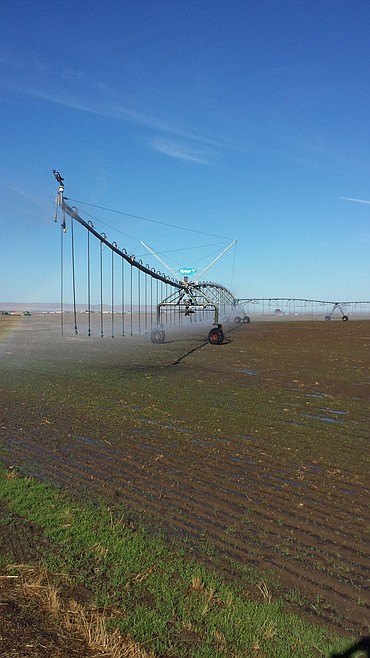A dry year: Irrigators in the Columbia Basin were saved by snowpack, but dryland farmers took a hit
MOSES LAKE — It was a very dry year in the Columbia Basin.
“Brutal,” said Jeff Marti, a water resources planner and drought coordinator for the Department of Ecology.
While statewide from March to August 2021, around 6.9 inches of precipitation — rain and snow — fell on Washington state, a little more than half the average of 13.03 inches, Marti said it was even worse here locally.
According to data from the National Oceanic and Atmospheric Administration (NOAA), less than an inch — 0.97 inches — fell in Grant County from March through August, compared with an average of 3.11 inches.
In Adams County, 0.81 inches fell during the same period, compared with typical rainfall of 4.03.
In fact, Marti said in Adams County, March through August 2021 were the driest six months since records started being kept in 1895. Things were a bit better in Grant County. But only a little.
“It was the third driest on record, and the driest since 1973,” Marti said.
Irrigators in the Columbia Basin were saved by snowpack that by April 1 was 130% of normal, Marti said, but dryland farmers took a huge hit, receiving only a portion of the precipitation in snow and rain they normally get.
“It was an interesting divergence of worlds,” he said. “Irrigators had it good; dryland farmers were in a world of hurt.”
There is cause for optimism, Marti said, in the La Niña that NOAA is forecasting likely arising in the eastern Pacific. Should it come, it will likely bring cooler temperatures and more precipitation to the Pacific Northwest.
However, it will probably not bring an end to the drought in the Columbia Basin, he said. More snow and rain, if it comes, will be good, but the region would need 140% of normal rainfall to completely recover, and the chances that could happen are slim.
“When we look at the moisture deficit in eastern Washington, and how much rain it would take to get back to normal, we’d need over 11 inches,” Marti said. “And when we look at history, that’s only happened three times in the last 126 years.”
Any amount of rain will be welcome, Marti added, even if it doesn’t bring an end to the drought.
“There will be lingering effects, but it will get better,” he said.



